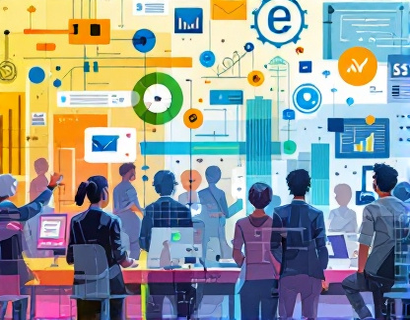AI-Powered Language Learning: Enhancing Vocabulary and Industry Knowledge
The landscape of language learning is rapidly evolving with the integration of artificial intelligence (AI) technologies. One of the most significant advancements in this domain is the development of AI-powered chat tools designed to revolutionize how learners and educators acquire specialized vocabulary and industry insights. These innovative platforms not only provide accurate and content-verified information but also cater to diverse user needs, including a specialized child-friendly version for safe and educational use.
Understanding the Need for Specialized Vocabulary
Language learning extends beyond basic grammar and common phrases. It involves mastering specialized vocabulary that is crucial for specific industries and professional contexts. For instance, medical professionals need to know terms related to anatomy and pharmacology, while business professionals require knowledge of finance and marketing jargon. Traditional language learning methods often fall short in providing the depth and context required for such specialized terms. This is where AI-powered chat tools come into play, offering a tailored approach to vocabulary acquisition.
AI Chat Tools: A Game Changer in Language Learning
AI chat tools are designed to simulate conversations and provide users with real-time, context-specific vocabulary and industry insights. These tools use natural language processing (NLP) and machine learning algorithms to understand user queries and deliver relevant responses. The interactive nature of these chat tools makes learning more engaging and effective, as users can practice and reinforce their knowledge through continuous dialogue.
Key Features of AI-Powered Language Learning Tools
- Content Verification: Ensuring that the information provided is accurate and up-to-date is crucial. These tools undergo rigorous content verification processes to maintain high standards of accuracy.
- Interactive Learning: Users can engage in conversations, ask questions, and receive immediate feedback, making the learning process more dynamic and personalized.
- Specialized Vocabulary: The tools focus on industry-specific terms and phrases, helping learners build a robust and contextually relevant vocabulary.
- Child-Friendly Version: A specialized version of the tool is available for children and students, ensuring a safe and educational environment.
Enhancing Vocabulary with AI Chat Tools
The vocabulary acquisition process is significantly enhanced through AI chat tools. These tools offer several advantages over traditional learning methods:
Firstly, they provide immediate and context-specific definitions and usage examples. For example, if a learner asks about the term "synergy" in a business context, the tool will not only define the word but also provide examples of how it is used in business communications. This contextual learning helps in better retention and understanding.
Secondly, AI chat tools can adapt to the learner's level and progress. They can detect areas where the user is struggling and provide targeted exercises and explanations. This personalized approach ensures that learners are constantly challenged and supported, leading to more effective learning outcomes.
Industry Insights and Professional Development
Beyond vocabulary, these tools offer valuable insights into various industries. For learners aiming to enter a specific field, understanding the jargon and current trends is essential. AI chat tools can provide up-to-date information on industry news, key players, and emerging technologies. For instance, a learner interested in the tech industry can engage in conversations about the latest advancements in artificial intelligence, cybersecurity threats, and digital transformation strategies.
These insights are not only useful for academic purposes but also for professional development. Educators can use these tools to stay informed about industry developments and incorporate relevant content into their teaching. This ensures that the knowledge being imparted is current and applicable in real-world scenarios.
Benefits for Educators
AI-powered chat tools offer numerous benefits for educators looking to enhance their teaching methods:
Firstly, these tools can serve as valuable resources for lesson planning. Educators can use the platform to find relevant vocabulary lists, industry-specific terms, and discussion topics. This saves time and ensures that the content is both accurate and engaging.
Secondly, AI chat tools can facilitate one-on-one or group tutoring sessions. Educators can use the tool to guide students through interactive exercises, monitor progress, and provide instant feedback. This personalized attention can significantly boost student engagement and learning outcomes.
Supporting Diverse Learning Needs
One of the most significant advantages of AI chat tools is their ability to cater to diverse learning needs. For students with special educational requirements, the tool can be configured to use simpler language, provide visual aids, and offer additional explanations. This inclusivity ensures that all learners, regardless of their background or abilities, can benefit from the platform.
Moreover, the child-friendly version of the tool is designed with safety and educational value in mind. It includes age-appropriate content, interactive games, and activities that make learning fun and engaging for young learners. Parents and educators can rest assured that their children are using a secure and educational platform.
Building a Community of Language Learners
AI chat tools can also foster a sense of community among language learners. Users can connect with peers who share similar interests and learning goals. This community aspect encourages collaboration and mutual support, which are vital for language acquisition. Learners can exchange tips, practice conversations, and motivate each other to stay on track with their learning goals.
Educators can also leverage this community feature to create study groups and organize virtual language exchange events. This not only enhances the learning experience but also helps in building a global network of language enthusiasts.
Continuous Improvement and Innovation
The field of AI in language learning is rapidly evolving, with continuous improvements and innovations being made. Developers are constantly working on enhancing the algorithms to better understand and respond to user queries. This includes improving the accuracy of translations, expanding the vocabulary database, and incorporating more cultural context into responses.
Feedback from users plays a crucial role in this process. By engaging with the platform and providing input, learners and educators contribute to the ongoing development and refinement of the tool. This collaborative approach ensures that the platform remains relevant and effective in meeting the needs of its users.
Conclusion
AI-powered chat tools represent a significant advancement in language learning, offering a comprehensive and interactive way to acquire specialized vocabulary and industry insights. These tools not only enhance the learning experience but also support educators in providing high-quality instruction. With a focus on accuracy, inclusivity, and community building, these platforms are set to play a pivotal role in the future of language education.










































